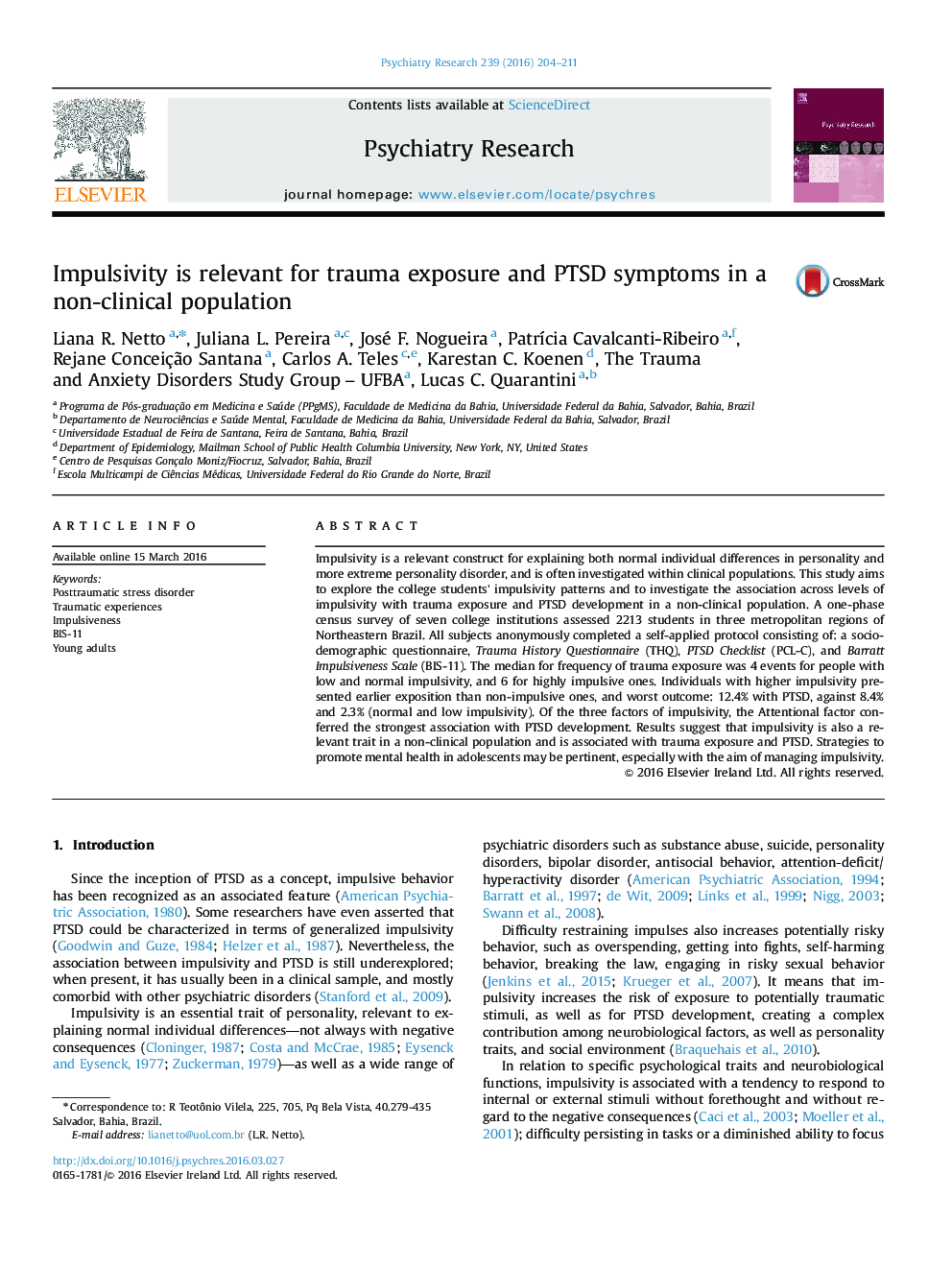| Article ID | Journal | Published Year | Pages | File Type |
|---|---|---|---|---|
| 6813425 | Psychiatry Research | 2016 | 8 Pages |
Abstract
Impulsivity is a relevant construct for explaining both normal individual differences in personality and more extreme personality disorder, and is often investigated within clinical populations. This study aims to explore the college students' impulsivity patterns and to investigate the association across levels of impulsivity with trauma exposure and PTSD development in a non-clinical population. A one-phase census survey of seven college institutions assessed 2213 students in three metropolitan regions of Northeastern Brazil. All subjects anonymously completed a self-applied protocol consisting of: a socio-demographic questionnaire, Trauma History Questionnaire (THQ), PTSD Checklist (PCL-C), and Barratt Impulsiveness Scale (BIS-11). The median for frequency of trauma exposure was 4 events for people with low and normal impulsivity, and 6 for highly impulsive ones. Individuals with higher impulsivity presented earlier exposition than non-impulsive ones, and worst outcome: 12.4% with PTSD, against 8.4% and 2.3% (normal and low impulsivity). Of the three factors of impulsivity, the Attentional factor conferred the strongest association with PTSD development. Results suggest that impulsivity is also a relevant trait in a non-clinical population and is associated with trauma exposure and PTSD. Strategies to promote mental health in adolescents may be pertinent, especially with the aim of managing impulsivity.
Related Topics
Life Sciences
Neuroscience
Biological Psychiatry
Authors
Liana R. Netto, Juliana L. Pereira, José F. Nogueira, PatrÃcia Cavalcanti-Ribeiro, Rejane Conceição Santana, Carlos A. Teles, Karestan C. Koenen,
